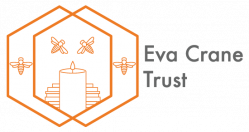From Hive to Table, 2015
From Hive to Table, 2015
“From Hive To Table”
An International Conference on the Safety and Authenticity of Bee Products
Istanbul, Turkey 21/22 May 2015
This was the first international congress to focus solely on food and safety issues associated with the authenticity of bee products including honey, royal jelly, pollen and propolis. It was held under the auspices of Istanbul Technical University, Yildiz Technical University and the Faculty of Agriculture of the Aristotle University of Thessaloniki. It was attended by almost 200 delegates representing all the major countries of Europe.
Consumers today want to know the food they buy is safe, meets the necessary quality requirements and is true to the product label. As a consequence of the recent horse meat scandal the European Commission defined the ten products that are at most risk from food fraud and, in March 2015, followed this up by recommending a coordinated control plan with a view to establishing the prevalence of fraudulent practices in the marketing of certain foods. One of the target products is honey. There is more equipment and more methods of testing foodstuffs today with greater accuracy than ever before yet, as we often see in the drug battle in sport, the fraudsters still manage to stay one step ahead of the testers.
During the course of two extremely full days a wide range of analytical methods were examined ranging from traditional HMF, pollen and sensory methods of assessment to the latest high tech methods using tandem quadrupole mass spectrometers and DNA analysis of honey.
Much attention was paid to pollutants and contaminants in honey including some problems, which are not always obvious, associated with GMOs. An example was given of a German professional producer who could not market his canola honey as it was found to have GMO contamination. The beekeeper knew there was no GMO crop within even the most extreme foraging distance of his bees and eventually the contamination was traced to the commercially available pollen substitute that had been given to the bees and not related to their foraging.
The classic way of testing for authenticity is to focus on marker compounds but the absence of certain marker compounds does not mean that the honey is not adulterated. In this way the cheats try to stay ahead of the game by coming up with adulteration syrup recipes that that do not have the marker compounds and so, unless the testers are also developing their side of the equation, the product can slip through the tester’s net. The way ahead is to develop full data profiles for each honey, easier said than done even with monofloral honeys, and then compare the test profile with the database profile which may be the result of testing and recording 4,000 or more samples. This is being done by QSI (Quality Services International) in Germany for – Acacia, Linden, Lavender, Eucalyptus, Heather, Rape, Sunflower, Thyme and a number of others.
The chance of fraudulent practice can be minimised if an integrated approach could be used fitting in with existing methodology to ensure that honey is authentic. This needs to be combined with unannounced sampling, testing and storage with effective traceability and full transparency of all operations along the whole supply chain – from hive to table.
Richard Jones.
